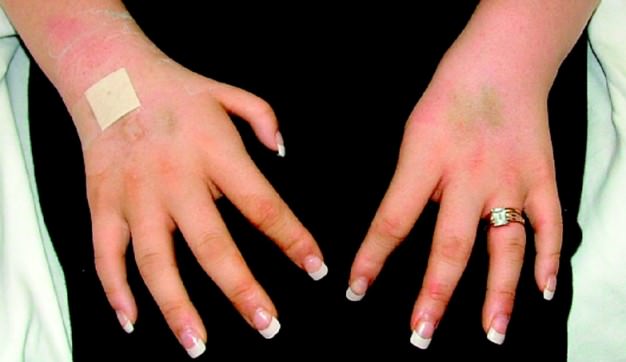Fanconi anemia: Gene therapy to cure the disease
Fanconi anemia is an inherited disease, classified as a rare disease, and is caused, due to problems in DNA repair that cause a deficit in the production of blood cells and a bone marrow failure.
Gene therapy appears as the hope to find an effective and definitive treatment. Several projects implemented in recent years try to find an answer to Fanconi anemia.
How to Fanconi anemia detected? What are the warning signs?
Table of Contents
Symptoms of Fanconi anemia
Repeated anemia, accompanied by hemorrhagic and infectious episodes, are the main symptoms of Fanconi anemia, which owes its name to the Swiss pediatrician who described it for the first time in the decade of 1920, Giudo Fanconi.
- Birth defects (abnormalities that can affect any organ)
- Short stature
- Clubbed thumb
- Skeletal defects (abnormalities in the hip or spinal malformations)
- Kidney problems (born without a kidney, or deformed or fused kidneys)
- Changes in coloration of the skin with appearance of spots (hyperpigmentation)
- Low birth weight in the case of babies
- Heart problems (coronary defects)
- Problems of the gastrointestinal system.
Treatment for Fanconi anemia
The current treatment for Fanconi anemia is the allogeneic transplantation – from another person – of hematopoietic stem cells.
However, this treatment can lead to long-term complications, which has prompted researchers to open new avenues of research to develop more innovative therapies, including gene therapy or transplantation of umbilical cord blood cells.
The genetic alteration of the cells in the bone marrow makes them more vulnerable to those who suffer from this pathology to suffer cancer or other congenital anomalies.
Correcting this genetic defect is the goal of gene therapy that has centered the European project coordinated by the Research Center for Energy, Environmental and Technological.
This therapy, in particular, would serve to correct the genetic alteration of the bone marrow and degenerative problems, but not other congenital anomalies of development and that may be present in 70% of the diagnosed patients.
What is gene therapy?
The gene therapy approach for Fanconi anemia consists of two parts. In the first, a drug is given to stimulate hematopoietic stem cells and mobilize them from the bone marrow into the peripheral blood.
This facilitates the obtaining of these stem cells, whose reduced presence is one of the characteristics of this disease.
Once obtained the cells, the next step will be the correction of the genetic defect and, subsequently, to replenish the patient. A strategy that, as scientists has pointed out has been successfully tested in other cases of congenital immunodeficiency.
